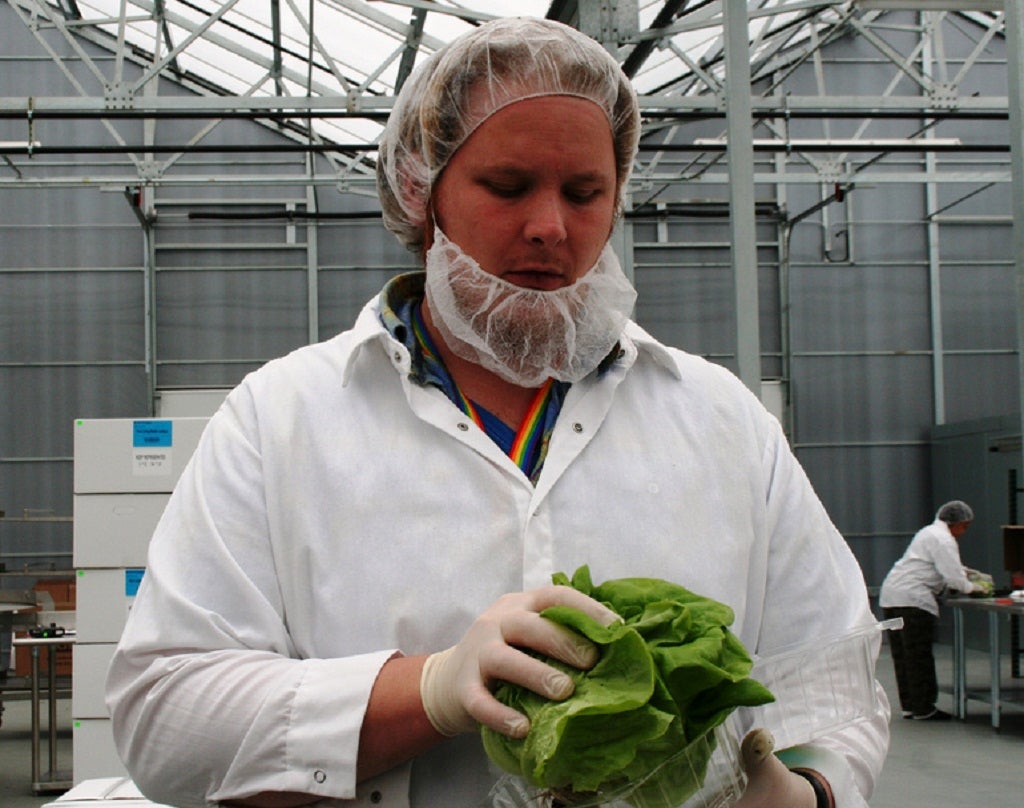To boldly grow: Nasa reveals plans to start growing lettuce in space
New machine will deliver nutrients to six romaine lettuces

Nasa has announced plans to start growing lettuce 230 miles above the earth.
New equipment will enable the food to be farmed for human consumption in orbit from December, something that has never been done before.
The human habitability of space laboratories has long been in need of improvement but now, according to Nasa, the Vegetable Production System (Veggie) will provide crews with a constant source of fresh, nutritious salad, using the cabin environment for temperature control and as a source of carbon dioxide for growth.
For its first outing the Veggie machine will deliver nutrients to six romaine lettuces. Bright pink LED lights will supply the plants with light for 28 days, after which they are expected to be ready for harvesting.
But before the lettuce is ready to be eaten, it must be frozen and stored for rigorous testing on Earth, to ensure that no harmful cosmic germs have been absorbed into the food. Space microbes are generally harmless, but US space missions uphold strict standards and nobody will be able to try anything until the vetting procedure has deemed it safe for humans.
The cost of food is one of the more pressing issues in modern space travel: sending food to astronauts costs around $10,000 per pound, International Space Station project scientist Howard Levine told Modern Farmer. As such, fresh produce is severely limited and growing crops on a large scale so costly that long-term benefits will not be seen anytime soon.
"At this point, the break-even cost is far too high for serious bioregenerative agriculture," Levine explains. "Six heads of lettuce make a nice supplement to the crew’s diet, but it isn’t going to feed them for the long-term."
The revelation of Veggie does not mark the first time that NASA has tested plant growth in space. The difference is that where previous efforts have been primarily academic, Veggie may actually help to sustain space travellers. Past experiments have included trialling quick-grow Brussels sprouts and dwarf wheat and assessing the impact of zero-gravity on plant growth.
If the lettuces prove a success, later space-farmed veggies may include radishes, a special species of tomato and snap peas - all crops that take up minimal space.
Subscribe to Independent Premium to bookmark this article
Want to bookmark your favourite articles and stories to read or reference later? Start your Independent Premium subscription today.

Join our commenting forum
Join thought-provoking conversations, follow other Independent readers and see their replies